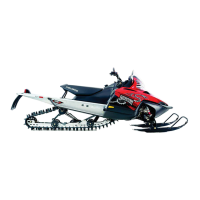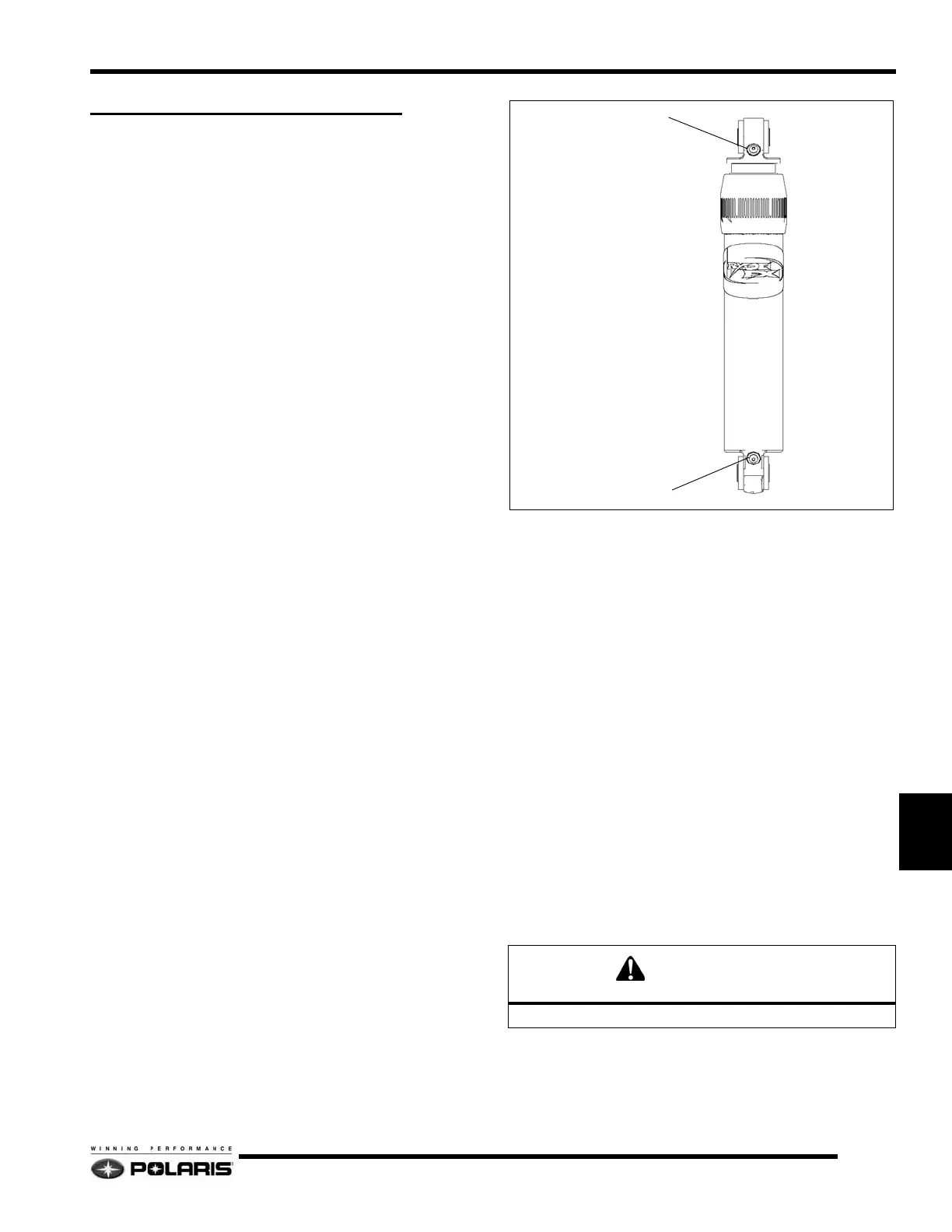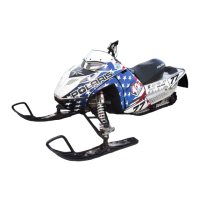9.15
Shocks
9
OPTIONAL SHOCK SETTINGS
Walker Evans Air Shock
NOTE: Always adjust both IFS shocks to the same
pressure setting.
Discharge the shock gas pressure completely before
refilling the shock with nitrogen.
Raise the shock nitrogen gas pressure within each
shock in 2.5 psi increments and keep the fill tool
needle installed in the charge port for at least 30
seconds to allow the gas pressure to stabilize.
Perform work on shocks when shocks and nitrogen
gas supply tank are at room temperature (70F / 21C).
The Walker Evans IFS Air shocks can be configured using
the stock and optional 2007 settings or the stock 2008
settings.
In 2007, an optional valve stack setting was specified to
accommodate riders wanting a stiffer shock setting. There
is not an optional valve stack configuration specified for
2008 Walker Evans IFS Air shocks.
The stock nitrogen gas pressure setting for a 2007 Walker
Evans FTS Air shock can be adjusted to increase its
stiffness.
Currently, there is not an optional nitrogen gas pressure
setting for the 2008 Walker Evans FST Air Shock.
Ryde FX Air 2.0 Shock
The shock rod pressure setting can be adjusted to
accommodate different rider weights and riding styles.
Before making any shock pressure adjustments, the rider
should ride the snowmobile for at least 250 - 500 miles in
all types of riding conditions.
NOTE: Do not adjust the shock body chamber
pressure setting. Always charge the shock body
chamber to specification.
Air 2.0 Shock Notes:
• All shock work must be performed when the shock
assembly and nitrogen supply tank are at least 70°F.
(21°C).
• Nitrogen pressure changes by approximately 2% for
every 10°F from 70°F.
• Polaris calibrates all shocks at 30°F ride temperature.
• Any IFS shock service that requires gas recharging
needs to be performed on both IFS shocks to maintain
the same spring rate between both shocks.
• When charging any shock, let the nitrogen gas stabilize
within the shock for at least 30 seconds before
removing the shock charge needle from the charge port.
If the rider is requesting stiffer shock settings for more
bottoming resistance, increase the shock rod nitrogen
pressure in 5 PSI increments until the desired
performance level is achieved.
Always reset the shock body chamber pressure to the
factory specification charge.
If the rider is requesting softer shock settings for less
bottoming resistance, decrease the shock rod nitrogen
CAUTION
Do not exceed 200 psi shock rod chamber pressure.
SHOCK BODY GAS FILL PORT
SHOCK ROD GAS FILL PORT

